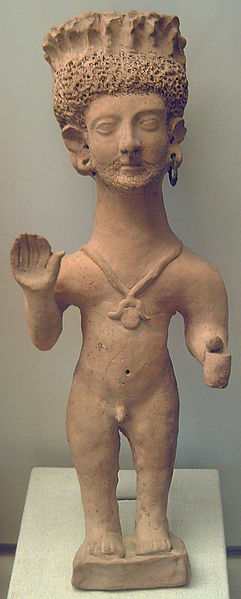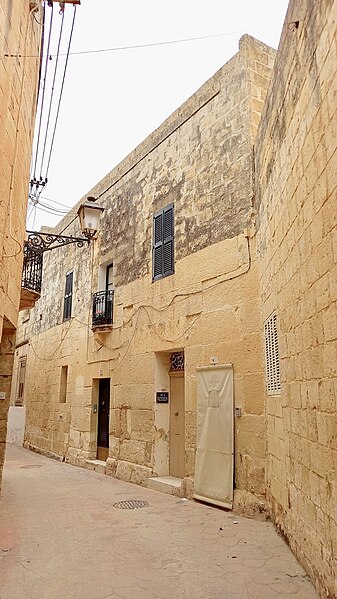The Punic people, usually known as the Carthaginians, were a Semitic people who migrated from Phoenicia to the Western Mediterranean during the Early Iron Age. In modern scholarship, the term Punic, the Latin equivalent of the Greek-derived term Phoenician, is exclusively used to refer to Phoenicians in the western Mediterranean, following the line of the Greek East and Latin West. The largest Punic settlement was Ancient Carthage, but there were 300 other settlements along the North African coast from Leptis Magna in modern Libya to Mogador in southern Morocco, as well as western Sicily, southern Sardinia, the southern and eastern coasts of the Iberian Peninsula, Malta, and Ibiza. Their language, Punic, was a dialect of Phoenician, one of the Northwest Semitic languages originating in the Levant.
Sardo-Punic mask showing a Sardonic grin
Punic praying statuette, c. 3rd century BC
The Punic Building in Żurrieq, a modern structure incorporating Punic ruins
Model of the Punic military port, Carthage
Phoenicia, or Phœnicia, was an ancient Semitic thalassocratic civilization originating in the coastal strip of the Levant region of the eastern Mediterranean, primarily located in modern Lebanon. The territory of the Phoenicians expanded and contracted throughout history, with the core of their culture stretching from Arwad in modern Syria to Mount Carmel in modern Israel covering the entire coast of modern Lebanon. Beyond their homeland, the Phoenicians extended through trade and colonization throughout the Mediterranean, from Cyprus to the Iberian Peninsula.
Two bronze fragments from an Assyrian palace gate depicting the collection of tribute from the Phoenician cities of Tyre and Sidon (859–824 BC). British Museum.
Phoenicians build pontoon bridges for Xerxes I of Persia during the second Persian invasion of Greece in 480 BC (1915 drawing by A. C. Weatherstone).
Achaemenid-era coin of Abdashtart I of Sidon, who is seen at the back of the chariot, behind the Persian King.
A naval action during Alexander the Great's Siege of Tyre (332 BC). Drawing by André Castaigne, 1888–89.








